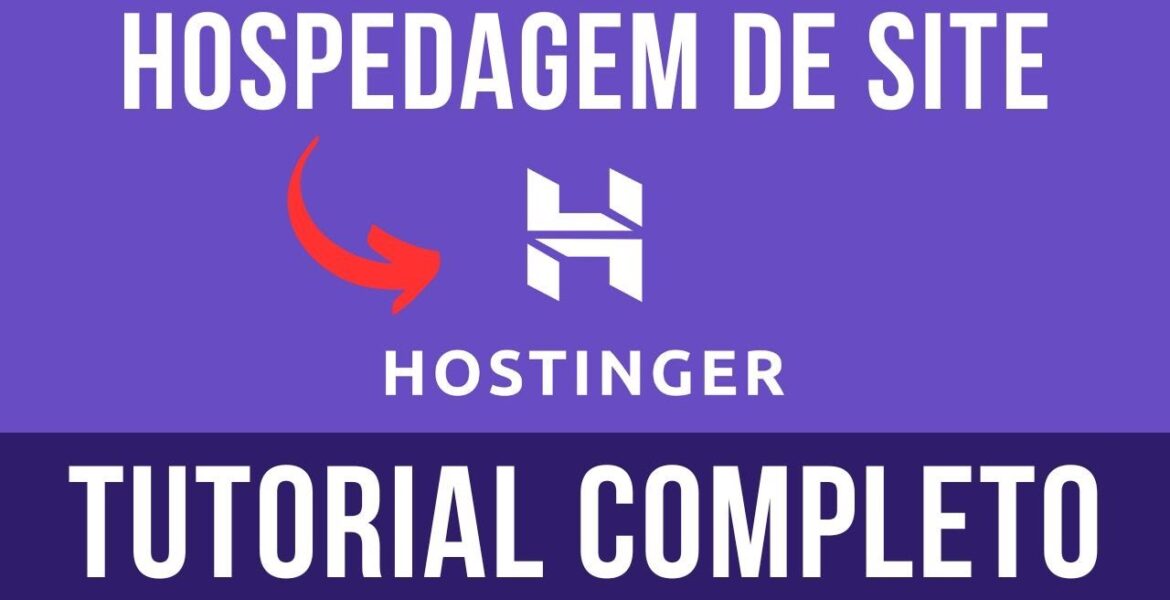
Hostinger – Complete Website Hosting Tutorial 2024
Tutorial Hosting
Setting up Web Hosting for Your Site: A Step-by-Step Guide
In this complete tutorial, you will learn everything you need step by step to set up web hosting for your site so that you can make your site accessible via the internet. Web hosting is a fundamental resource to have an online presence, as it stores and allows access to the files of your site. Let’s go through the topics we will cover in this complete web hosting tutorial:
Understanding Hosting Plans
First, we will discuss the hosting plans offered by Hostinger, the company we will use in this example. We will analyze the cost-benefit of these plans and guide you through the process of signing up for a hosting plan.
Exploring Hosting Resources
After signing up for a hosting plan, we will provide an overview of the resources available in the hosting panel offered by Hostinger. This will help you familiarize yourself with the hosting environment.
Buying and Configuring a Domain
Next, we will show you how to purchase and configure a domain using Hostinger’s panel. This involves acquiring and setting up a domain internally within the hosting environment.
Setting Up SSL and Accessing Site Files
We will discuss aspects like SSL security and accessing the folders containing your site files, along with other related configurations and settings.
Email Service Setup
We will cover setting up professional email accounts related to your site to establish a professional communication channel.
By following these steps, you will be able to create a complete infrastructure that allows you to launch your digital business and make your site available online.
Understanding Hosting Plans and Signing Up
When it comes to choosing a hosting plan, Hostinger offers various options such as Single, Premium, Business, and Cloud plans. Each plan has its own features and benefits, including the ability to host multiple sites and create professional email accounts.
Setting Up a Domain and Configuring Hosting
To get started, visit the Hostinger website using the affiliate link provided to receive a discount. Choose the hosting plan that suits your needs and sign up for a suitable period, considering factors like cost and domain included in the package.
Configuring a Domain and Hosting
Within the Hostinger panel, you can connect your domain to the hosting service and create your site environment. This involves configuring the domain and hosting settings to establish the foundation of your website.
Exploring Hosting Resources and Security Features
Familiarize yourself with the resources available in the hosting panel, including security features like SSL certificates. Access and manage the folders containing your site files to customize and maintain your website.
Setting Up Professional Email Accounts
Create professional email accounts related to your site to enhance communication and branding. Configure and manage these accounts within the hosting environment to establish a professional online presence.
By following these steps and utilizing the resources provided by Hostinger, you can effectively set up a robust hosting environment for your site. Remember to prioritize security measures, optimize your site’s performance, and create a professional communication channel through email services.
Utilize the features and tools available within the hosting panel to manage your site effectively and make it accessible to a wider audience. With the right setup and configuration, you can establish a strong digital presence and successfully launch your online business.
Remember to regularly monitor and maintain your site to ensure optimal performance and security. Thank you for following this comprehensive tutorial on setting up web hosting for your site. Leave any questions or feedback in the comments, and stay tuned for more helpful tutorials.
Additional Resources:
– Hostinger Affiliate Link: [Insert Link]
– Hostinger Website: [Insert Link]
– Hostinger Hosting Plans: [Insert Information]
– Hostinger Support: [Insert Contact Information]
Disclaimer: This tutorial is for educational purposes only and may vary depending on individual circumstances and hosting providers. Always refer to official resources and support for specific inquiries and assistance.



